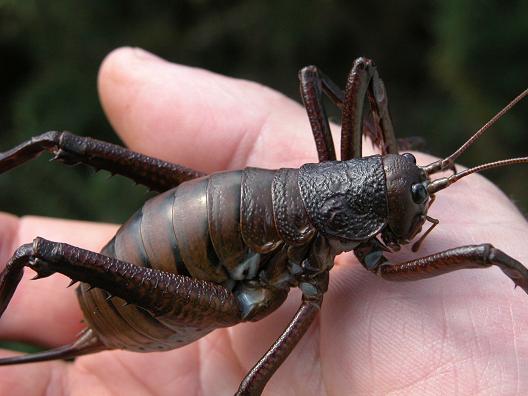
This exercise is designed to show how to run programs PRESENCE to compute species presence and detectability estimates from 'presence-absence' data which includes covariates.

Input data consists of 'detection-histories' of individuals at survey sites, a site covariate, and two sample covariates.
Click 'File/New Project' to start a new analysis. A dialog box will appear asking for a title, filename, number of sites,etc. Click the 'Input Data Form' button.
Now, start your spreadsheet program, and load the sample data file named 'Weta_pg116.xls'. Select the 'detection_histories' tab (at the bottom) and select all cells ('Cntl-A'), and copy to the clipboard ('Edit'/'Copy').
Next, return to program PRESENCE (without closing Excel) and click in the first cell of the input data form (site 1, 1-1). Go to the 'Edit' menu, and click 'Paste', 'paste values'.
Click 'Edit/add site covariate table' and click the 'site covars' tab. Go back to Excel and click the 'site_covar' tab and copy the column of data to the clipboard. Switch back to PRESENCE and paste the data into the table.
Repeat this procedure to add the two sample-covariate tables. Make sure to click the appropriate tab in PRESENCE before pasting the covariate data.
Select the 'site covar' tab and click in the first cell. Click 'rename covariate' from the 'Edit' menu and change the name to 'Browsed'. Change the names of the sample covariates to 'obs1' and 'obs2'.
Save the input by clikcing 'File/Save as' and name the file 'weta_pg116.pao'. Close the Input Data Form window by clicking the X in the upper right corner or clicking 'File/Close'.
Next, click the 'Click to select file' button on the 'Enter Specifications' window. When the dialog box appears, select the file just created (weta_pg116.pao) and click 'Open'. Click in the 'Title' box and enter 'single-season example from page 116'. Click 'OK'.
You're now presented with a 'Results Browser' window where a summary of each model will be saved. To run our first model, click 'Run/Analysis:single-season' from the menu-bar.
When the 'Setup Numerical Estimation Run' window appears, click the 'custom' option button and a design matrix window will appear. By default, a model with one parameter for occupancy (psi) will appear in the occupancy tab, and one parameter (column) will appear for all 5 p's. This is the same as the 1-group constant-P default model. Click 'OK to Run' to run this model.
After the analysis is complete, click 'yes' to append the output to the results browser.
Next, let's run a model where detection (p) is a function of the 'Browsed' covariate. Click 'Run Analysis:single-season', then 'custom'. Leave the occupancy table alone and click the 'detection' tab. Click 'Edit/Add column', and click the cursor on the last column of the first row. Then click 'Init' and select '*Browsed' from the list. The design- matrix should contain a column containing the word 'Browsed'. Change the model name to 'Psi(.),p(Browsed)' and click 'OK to Run'.
Next, let's run a model where occupancy is a function of the 'Browsed' covariate and detection is an additive function of Day+Obs. Click 'Run Analyis:single-season', custom, then add a column to the 'occupancy' table. Click the rightmost cell in the first row and click 'Init' and select '*Browsed'. Then, click the 'detection' tab and click 'Init/Full Identity'. Click 'add columns' to add two additional columns to the table and click in the first row of the 2nd-last column. Click 'Init' and select '*obs1', then click the last column and click 'Init' and selelct '*obs2'. Change the model name to 'psi(browsed) p(day+obs)' and click 'OK to Run'.
Notes:
B6=-1.07
Odds ratio ==> Exp(-1.07) = 0.343
Odds of obs 1 detecting weta = 1/3 of odds of obs 3 detecting weta